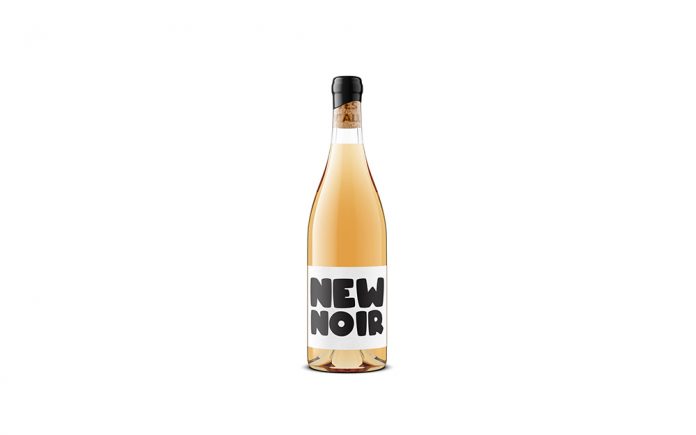
By Rick Riozza
So what’s more seasonably apt than an “Orange Wine” for the Halloween month of October? That’s right! This column is always referring to the brave new world of wine; I know—you were hoping for some real wine info here, not some Kool-Aid stuff poured out of a Jack-o’-lantern.
But seriously folks, Orange wine is a type of wine—just like a rosé, but definitely not as popular. I think we can have a bit of fun playing around with Kool-Aid wine, especially with wine newbies who’ve never heard nor seen an Orange wine. But for those enthusiasts who know their stuff—they’ll no doubt think this column has gone silly and the whole exercise a bit droll.
Really quick—an “orange wine” is a made by fermenting white grapes in contact with the skins, hence why they are also called skin-contact wines.
Usually when making white wine, the grapes are pressed to extract the juice from the fruit, leaving the skins and seeds behind. The white juice is collected into vats and then fermented. Orange wine is also made from white wine grapes, but instead of pressing the juice out and away from the skins and seeds, the juice is fermented with them to give them their pigment and some tannin. The fermenting juice is then left alone anywhere from a few days to a year. As mentioned, this process is similar to rosé wine, which is made with red grapes that sit on their skins for only a few hours.
Bon Appetit’s wine writer, Marissa Ross, a couple of years back, had a lot on her mind when she railed against “orange wine”—at length!
“Based on studies I’ve accidentally conducted by talking with strangers about wine, I have noticed a disturbing new trend. Like red and white and rosé before it, people have begun to use the color orange to define and judge wines. People seem to either love “orange wine” or hate “orange wine” but also don’t seem to understand what “orange wine” is. They know that it’s “natural” and “cool” and apparently that’s what’s important (I guess?). I had a guy recently tell me he “only drinks orange wine” and would love for me to teach him about “orange varieties.” This guy proceeded to laugh in my face when I said that any white-wine grape can be used to make orange wine.
“I’m not saying you’d ever be that guy, but I also don’t want you to ever be that guy. That guy is the worst. Not only was he rude and wrong, but why in the world would you ever want to only drink one shade of wine?! “Orange” isn’t a type of grape or winemaking technique. It’s a color! And it’s only one color in the vast style, and color spectrum, of skin-contact wines.
“Skin-contact wines are white wines made like red wines. They ferment with the grape skins, which give wine its color. Depending on how long the juice ferments with the skins—anywhere from a few hours to many months—skin-contact wines can range in color from golden-straw yellow to vibrant amber to Tony the Tiger orange. The time with the skins also gives these wines more red wine characteristics, like bigger body and more tannin, while maintaining the acidity of a white wine. The longer the skins hang with the juice, the bigger and bolder the wine. You can end up with lighter skin-contact wines whose taste is reminiscent of the Jura’s oxidative white wines, with notes of bruised apple all the way to dirty bong water–colored bottles that taste almost like a sour beer.
“This is why the term “orange wine” as a category needs to die. I know, a bold statement coming from a woman who has a section in a published book with her name on it literally titled “Orange Wines.” Trust me, I’d take it back if I could, along with that trip to Tijuana on ‘shrooms, but the term “orange wine” is limiting you as a wine drinker. It’s locking you into a color, and since skin-contact wines can be made with any white wine grape and use any winemaking technique, orange-hued wines can vary wildly. You may love a bright-orange Trebbiano but find the same colored Pinot Grigio to be overpowering and too tannic. But asking for a “skin-contact wine” opens you up to a world of colors, flavors, and possibilities you may never have otherwise experienced.”
So there you have it! The colorful term has become evanescent and gone from our vino vocabulary to the stodgy “skin-contact wine” moniker. Whaddya gonna do?
Just the other day, I tasted (pardon my language) the orange wine 2020 New Noir from Maison Noir, an Oregon wine company, “Founded by sommelier André Hueston Mack in 2007, that incorporates a trademark attitude and personal perspective on wine subculture. The wines are unique and distinctive garage wines, initially created for some of the New York’s best restaurants for whom Mack was a sommelier, and now the wines are available nationwide.”
Their website, with info on Mack and their wine portfolio is pretty cool; if you’re so inclined, I’d recommend checking it out: maisonnoirwines.com.
The winery’s technical notes on the 2020 New Noir: “A skin contact “Northwest Edelzwicker” of sorts, a diabolical blend of 50% Gewurztraminer, 28% Pinot Gris, 12% Riesling, 5% Muscat, and 5% Pinot Blanc: Stone fruit potpourri, racy acidity with a sprinkle of molten salt!”
With delicious notes of mild honey, nuts, stone fruits and dried flowers, I really enjoyed the wine and I’ll be serving it up during the holidays. The 2020 New Noir (around $25) was just recently released and will be showing up at your favorite wine shop soon. Indeed, call them up and ask them to get it in asap! Cheers! And have a Happy Orange Wine Halloween!
Rick is your somm-about town. Contact him at winespectrum@aol.com








































